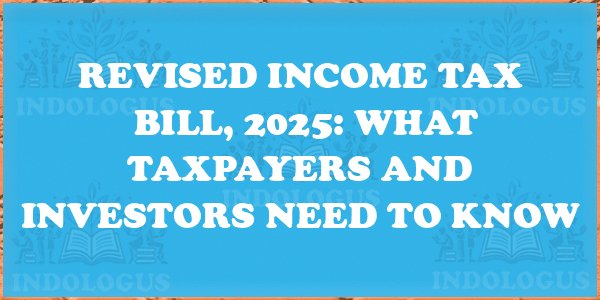The Revised Income Tax Bill, 2025 introduces key reforms to simplify tax compliance and enhance transparency. Union Finance Minister Nirmala Sitharaman has withdrawn the old draft and introduced a revised version in Parliament, aiming to modernize India’s tax framework.
Why Was the Earlier Bill Withdrawn?
- Drafting inconsistencies and technical errors.
- Terminology clarifications and improved legal language.
- Extensive stakeholder feedback for a clearer bill.
Structure and Key Features of the New Bill
- Simplified Language: Legal terminology rewritten for clarity.
- Organized Provisions: 536 sections and 16 schedules for easy navigation.
- Introduction of “Tax Year”: Eliminates dual system for better clarity.
- Digital-first Approach: Enhanced powers for digital administration.
Major Select Committee Recommendations
Taxpayer Benefits & Relief
- Refunds on Late Returns.
- Dividend Deduction (Section 80M).
- NIL-TDS Facility.
Compliance & Procedural Changes
- Simplified Advance Ruling Fees.
- Definition Alignment: MSME.
- Expanded Pension Deduction.
Top 10 Changes at a Glance
- Refund claim possible even for late returns.
- Reintroduction of Section 80M deduction for inter-corporate dividends.
- Facility for NIL-TDS certificates.
What Does It Mean for Taxpayers and Investors?
- Simplification and Transparency: Easier tax compliance and clearer rules.
- Reduced Litigation: Removal of ambiguous provisions.
- Support for Digital India: Emphasis on digital processes.
Key Takeaways for Competitive Exams:
- The Revised Income Tax Bill, 2025 aims to simplify tax compliance and enhance transparency.
- Key reforms include refunds on late returns, dividend deductions, and alignment of MSME definitions.
- Investor confidence is expected to increase due to clearer tax rules and reduced uncertainties.




